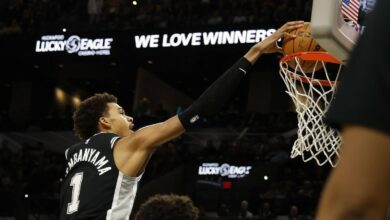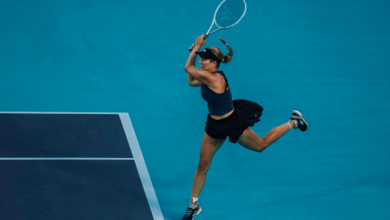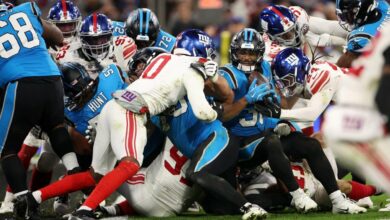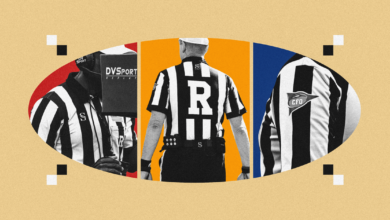The Secret Weapon to Winning a Presidents Cup (or Ryder Cup)? Look to the Caddies
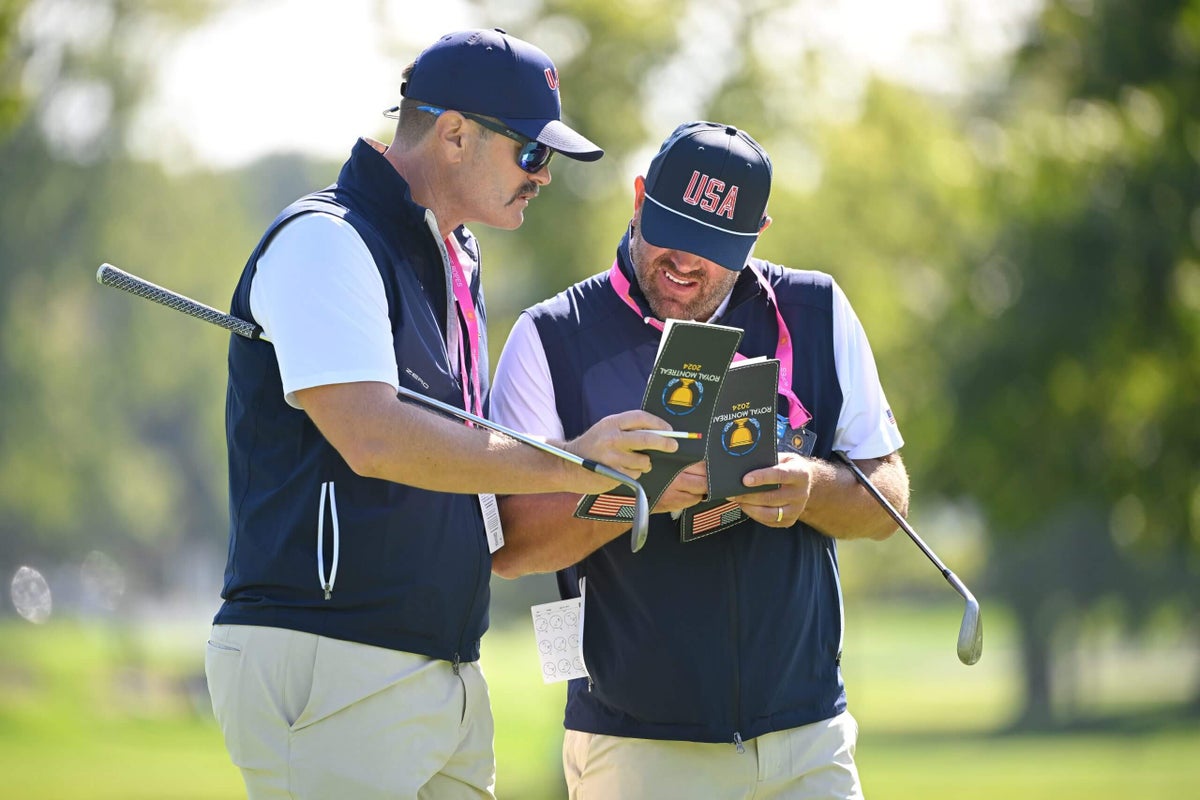
MONTREAL — When Austin Kaiser arrives at a PGA Tour stop, the first thing he does is do his homework: He walks every inch of the course for his player, Xander Schauffele. He might chat with a few other caddies along the way, chat with a buddy or two as he jots down notes and maps out greens in his yardage book. But when Kaiser finds something — a particular yardage that might be useful, a piece of pertinent information about the 18-hole mystery that lies before him — he resists the urge to share it. Kaiser, now a two-time major-winning caddie, has learned to keep his lips sealed.
“Xander says, don’t help anybody!” Kaiser says, “It’s a competitive advantage. If we’re playing in a major and I have information that could help them potentially beat us, why would I do that?”
Kaiser’s thought process is obvious and common among top-tier caddies. But that mindset is lost for one week a year.
At this week’s Presidents Cup (and the Ryder Cup in previous years), 24 individual golfers are suddenly allowed to play on two 12-man teams. And that means their caddies are, too.
Nobody gets paid. Nobody earns OWGR points. For a week, 12 players are just trying to beat the other team in front of them, and to do that, they have to come together as one operational unit. It’s tough because golfers have been programmed to be individual athletes since they were juniors. But when they don’t come together, it rarely ends well — as history has shown.
The 12 caddies on these teams are secretly important to that weeklong quest for unity. At most team events, the caddies even have their own “caddie captain” to act as the group’s leader. Usually, it’s the captain’s current caddie, but amid concerns about 76-year-old Fluff Cowan’s recovery from hip surgery and his ability to use group text, Kaiser has taken on a larger role.

Caddies and players from the U.S. team will be together this week, on and off the course. (Chris Condon/PGA Tour via Getty Images)
During a team event, the 12 runners not only walk the course side by side, they walk it together, sharing observations and opinions on how to play each hole. When they receive the pin locations for match days, they meet at the team hotel and work through the sheet, green by green, discussing the best spots for their players to “miss.” Alternating pairs of shots are then released and the caddies join forces and work with team statisticians to determine where each player should be placed on each hole.
“There are a few caddies at a tournament every week that I can talk to about the golf course, but now we have 12 of the best caddies in the world giving their opinions on how to play the game,” said Joe Greiner, Max Homa’s regular caddie.
“It’s usually you and your guy. That’s it,” says Paul Tesori, Tom Kim’s caddie and the former caddie for Vijay Singh and Webb Simpson. “But once you get put on one of those teams, it’s a completely different vibe.”
The team operation has always extended beyond the players. But for years, the importance of caddies at the Ryder Cup and Presidents Cup has been overlooked — or reduced to an afterthought, like Joe LaCava’s Marco Simone spat with Rory McIlroy or Tesori’s fateful decision to wear a “Tiger Who?” hat to Singh’s 2000 Presidents Cup singles match.

GALLING DEEPER
Presidents Cup Analysis: 10 Facts About US vs. International
Now the tide is beginning to turn.
This spring, veteran caddie and current NBC commentator John Wood got a call from then-PGA of America CEO Seth Waugh. Over the phone, Waugh described a new role being created for the U.S. Ryder Cup organization: Team Manager. “I swear to you, my first thought was, ‘Oh man, how cool is this? They respect me enough to ask me for a couple of names that I would recommend for the job,'” Wood says.
A few phone calls later, Wood got the news: the job was his. He was stunned and honored at the same time. “There is nothing, and I mean nothing, in my professional career that I am more passionate about than the Ryder Cup,” Wood said.
After a career spanning more than 20 years as a caddie for the likes of Mark Calcavecchia and Hunter Mahan, Wood is now being tipped for a pivotal role at one of the sport’s biggest events. Starting at the 2025 Ryder Cup at Bethpage Black, Wood will work directly with the U.S. team, including captain Keegan Bradley, his vice-captains and players, on all “strategic and operational matters” relating to the competition, the PGA of America said.
It’s a huge role. And it’s a huge indicator of how valuable guys like Wood are to the American team golf pipeline.
At Royal Montreal, players and caddies share a locker room and a team room. They’re together on the golf course, and they’re together when they go back to their accommodations to relax. They act as one team all week. At the 2023 Ryder Cup at Marco Simone, there were separate rooms for caddies and players at the team hotel. Greiner says he spent most nights in Rome 100 feet away from Homa, but the two texted from their respective spaces.
“One of the cool things about the Presidents Cup is they have a USA Room in the hotel that’s for the players and the caddies, where we have dinner, play ping pong and hang out,” Greiner said. “Sometimes in this game, when you get everybody off the golf course, everybody relaxes and you see everybody’s personality more when we’re all in one room. (Rome) was really weird, to be honest.”

Joe Greiner is in his third team event as Max Homa’s caddie. (Minas Panagiotakis/Getty Images)
So far, Woods’ new appointment as team manager has sent positive signals for caddie integration, with it increasingly looking like the lineup at Bethpage will be the same as that at this week’s Presidents Cup.
“We can’t make requests, we’re caddies. So we have Wood to do that for us,” Kaiser said. “He’s already talked to Keegan, and Keegan is like, ‘We’re going to make it one team room. We’re going to make it the most uniform room ever.'”
The first indication of caddie treatment at team events is when each runner receives an email in his inbox before the event. He is asked for his clothing and shoe size. “Caddies never get those questions,” says Tesori.
Then their travel arrangements are made and their hotel rooms are covered. At regular PGA Tour events, caddies are responsible for all their own logistics and expenses. The accommodations provided at a team event can feel like entering a whole new world—a weight lifted off their shoulders. Instead of leaving the course alone at the end of a brutally long tournament day, the caddies at this week’s Presidents Cup retreat to a shared space of like-minded golf enthusiasts, ready to swap stories and unpack the day’s drama. It’s not unheard of for a caddie, worried that his player has heard the same message from him so many times that it’s lost its impact, to ask a colleague to pass on some advice to the player the next day.
Veteran caddies often take pride in sharing memories from past cups and pointing rookies in the right direction. It’s also a great opportunity to learn. Whether you realize it or not, caddying at a team event means unlimited access to some of the brightest minds in the game. Several caddies point to Wood and Ted Scott as influential voices who stand out.

GALLING DEEPER
Who will play their best at this Presidents Cup? It’s all about fit
Of course, the caddy business is so volatile that the best players are with one team one year and another the next.
Nearly 20 years after the singles match between Singh and Woods, Woods captained the 2019 Presidents Cup. Tesori was caddying for the Americans this time around, standing in for Webb Simpson. When he showed up for the U.S. team photos, Woods wore a hat with “Paul Who?” and “2 and 1” scrawled across the cap.
20 years later… 😂
Captain @TigerWoods finally gets revenge on former #IntlTeam turned #USTeam caddy, @PaulTesori photo.twitter.com/3DALDHMNn2
—Presidents Cup (@PresidentsCup) December 10, 2019
Woods always saw the benefits of caddie input for the team. As captain, he would often approach the runners — out of earshot of the players — and ask all sorts of questions: How is this player? Why won’t these two players play together?
Woods knew that the advantage of 12 professional caddies working together was not one to be ignored. As past events have shown, caddies are just as invested in the outcome of these team competitions as the players. And the reason behind that trend is as relatable as it gets.
“We don’t like to lose either,” Kaiser says. “We’re basically golfers who didn’t make it. We live vicariously through our players.”
(Top photo of Jonathan Jakovac, left, and John Ellis: Ben Jared/PGA Tour via Getty Images)

